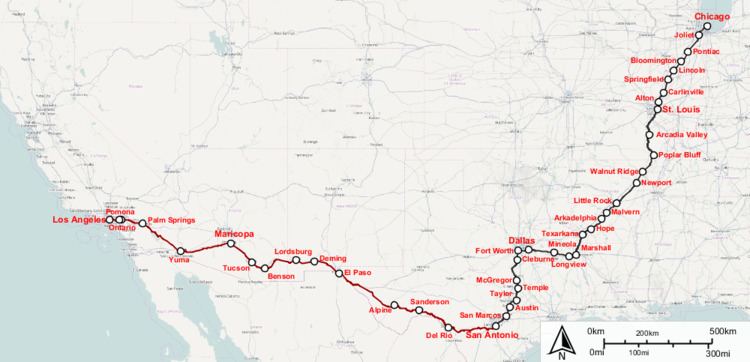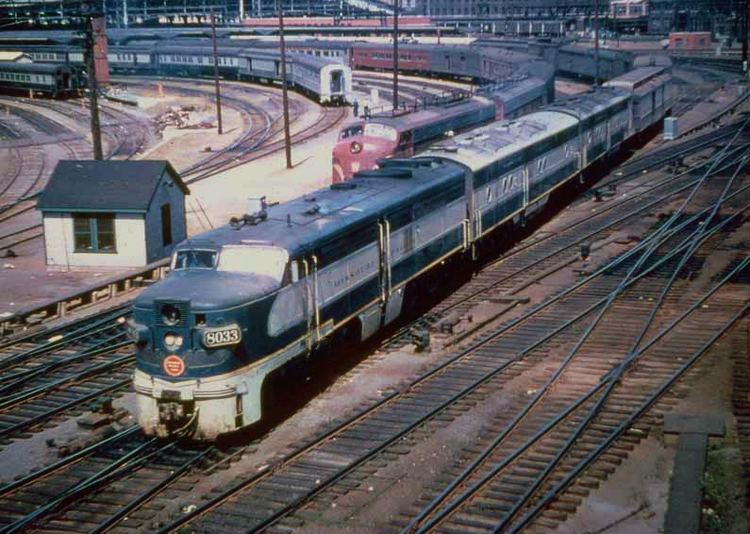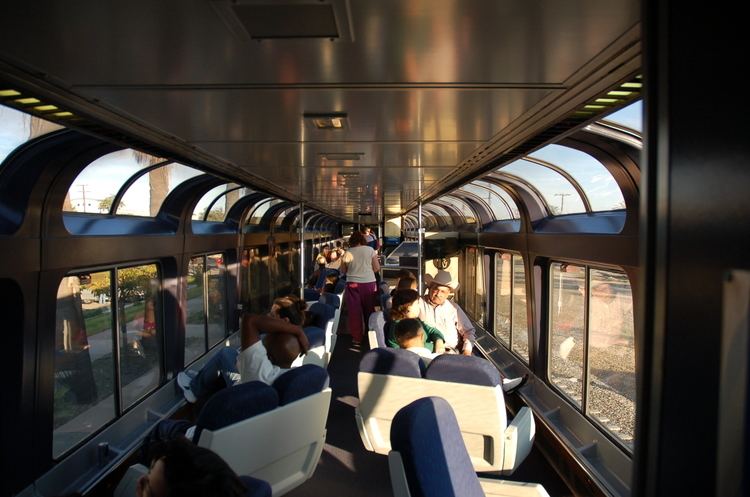 | ||
First service October 2, 1981 (Eagle)November 15, 1988 (Texas Eagle) Ridership 821 daily299,508 total (FY11) Distance travelled Average journey time Ends | ||
Amtrak texas eagle dallas to chicago
The Texas Eagle is a 1,306-mile (2,102 km) passenger train route operated by Amtrak in the central and western United States. Trains run daily between Chicago, Illinois, and San Antonio, Texas, and continue to Los Angeles, California, 2,728 miles (4,390 km) total, three days a week (incorporated as part of the Sunset Limited). Prior to 1988, the train was known as the Eagle.
Contents
- Amtrak texas eagle dallas to chicago
- Amtrak 22 texas eagle dallas chicago 8 17 2015 onboard footage
- History
- Proposed changes
- Route description
- Illinois detour
- Consist
- References

During fiscal year 2011, the Texas Eagle carried nearly 300,000 passengers, a 4.3% increase over FY2010. The train had a total revenue of $24,475,309 during FY2011, an increase of 7.7% from FY 2010.

Amtrak 22 texas eagle dallas chicago 8 17 2015 onboard footage
History
Amtrak's Texas Eagle is the direct successor of the Missouri Pacific Railroad and Texas and Pacific Railway train of the same name, which was inaugurated in 1948 and ultimately discontinued in 1971. The route of Amtrak's Texas Eagle is longer (Chicago to San Antonio versus St. Louis to San Antonio), but much of today's route is historically a part of the original Texas Eagle route. St. Louis to Texarkana and Taylor, Texas, to San Antonio is over former Missouri Pacific Railroad trackage, while the Texarkana to Fort Worth segment traverses the former Texas and Pacific Railway.

The Eagle began on October 2, 1981, as a restructuring of the discontinued Inter-American, which had operated a daily schedule from Chicago to Laredo, Texas, via San Antonio with a section to Houston, Texas, which diverged at Temple, Texas. The new Eagle dropped the Houston section and cut back from Laredo to San Antonio. The new train carried Superliner equipment, replacing the Amfleet coaches on the Inter-American. In addition, the new train ran on a thrice-weekly schedule with a through car on the Sunset Limited to Los Angeles, although the latter was not announced until the April 1982 timetable.

On November 15, 1988, Amtrak revived a Houston section, this time diverging at Dallas and running over the tracks of the Southern Pacific. It was the first time passenger traffic had served that route since 1958. Amtrak had intended to operate the Lone Star over this route back in the 1970s, but dropped the plan in the face of obstruction from the Southern Pacific. With the change, Amtrak revived the name Texas Eagle for the thrice-weekly Chicago-San Antonio/Houston train, while the off-day Chicago-St. Louis train remained the Eagle. On April 4, 2013 Amtrak opened a new station in Hope, Arkansas, the hometown of former U.S. president Bill Clinton. Arcadia Valley was added on November 17, 2016 serving Iron County, Missouri.
Proposed changes
In the August 2009 issue of Trains, Brian Rosenwald, Amtrak's chief of product management, noted that the Sunset Limited might be replaced by an extension of the Texas Eagle to Los Angeles: "We projected the revenue and looked at the logistics, and with a little bit of rescheduling came to the conclusion that we can make this happen with the equipment we have, and the additional revenue the train earns will more than cover the increased operating costs". The move would restore a connection to the Coast Starlight in both directions, and move boarding in Maricopa and Tucson, Arizona, to civilized times. "We are putting a stake in the ground: Triweekly needs to disappear," Rosenwald said. While the route of the Sunset Limited would not be entirely replaced, the performance improvements listed explain what will happen:
These changes would, in turn, create a through-car change similar to that of the Empire Builder. Such service would originate from Los Angeles and split at San Antonio, and vice versa from New Orleans.
Route description
As of November 2013, train 21 departs Chicago 1:45 pm, running between Chicago and its first station stop in Joliet, parallel to the Illinois and Michigan Canal, along first the Canadian National's Freeport Subdivision and then Joliet Subdivision, which is also used by Metra's Heritage Corridor and Amtrak's Lincoln Service. From Joliet, the train travels along Union Pacific rails, often parallel to Interstate 55, making station stops in Pontiac, Bloomington-Normal, Lincoln, Springfield, Carlinville (a flag stop), and Alton before crossing the Mississippi River to make its stop at St. Louis' Gateway Multimodal Transportation Center, scheduled for 7:21 pm. After St. Louis, the train skirts the Ozark Mountains, stopping in Poplar Bluff, Missouri, before crossing the state line into Arkansas. In Arkansas, the train stops in Walnut Ridge, the state capital of Little Rock, and the stations at Malvern, Arkadelphia, Hope, and Texarkana, on the Arkansas-Texas border. Continuing into Texas, the train makes station stops in Marshall, Longview, Mineola, Dallas and Fort Worth, which has connections to Oklahoma City via Amtrak's Heartland Flyer, and from there the train travels on BNSF trackage. The train continues on, making stops in Cleburne, McGregor, Temple (where the train resumes traveling on the Union Pacific), Taylor, the state capital of Austin, and San Marcos, with a scheduled arrival into San Antonio at 9:55 pm and a connection to the Sunset Limited on Tuesdays, Thursdays, and Sundays, to Los Angeles at 2:45 am. The northbound Texas Eagle, leaving San Antonio, departs at 7 am, with a scheduled arrival into Chicago at 1:45 pm the following day.
Illinois detour
In 2010, work began to upgrade track between Alton and Dwight, Illinois, to allow Amtrak's Lincoln Service to travel at higher speeds, leading to intermittent closures of the Texas Eagle's normal route over the Joliet/Pequod and Springfield Subdivisions. Because of this, the Texas Eagle has been detoured over the Union Pacific's Villa Grove (Chicago to Villa Grove) and Pana Subdivisions (from Villa Grove to Mitchell, Illinois).
Consist
The normally assigned consist on the Texas Eagle includes:
On a thrice-weekly basis, a coach and sleeping car operate from Chicago through San Antonio to Los Angeles, in conjunction with the Sunset Limited.
